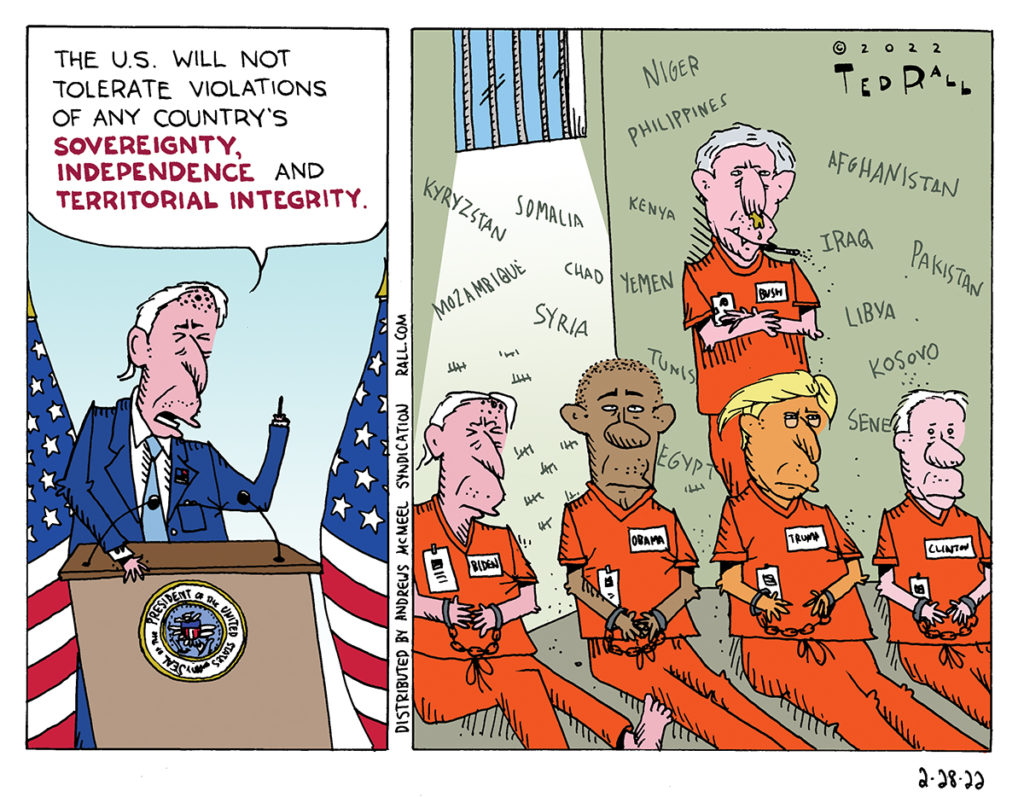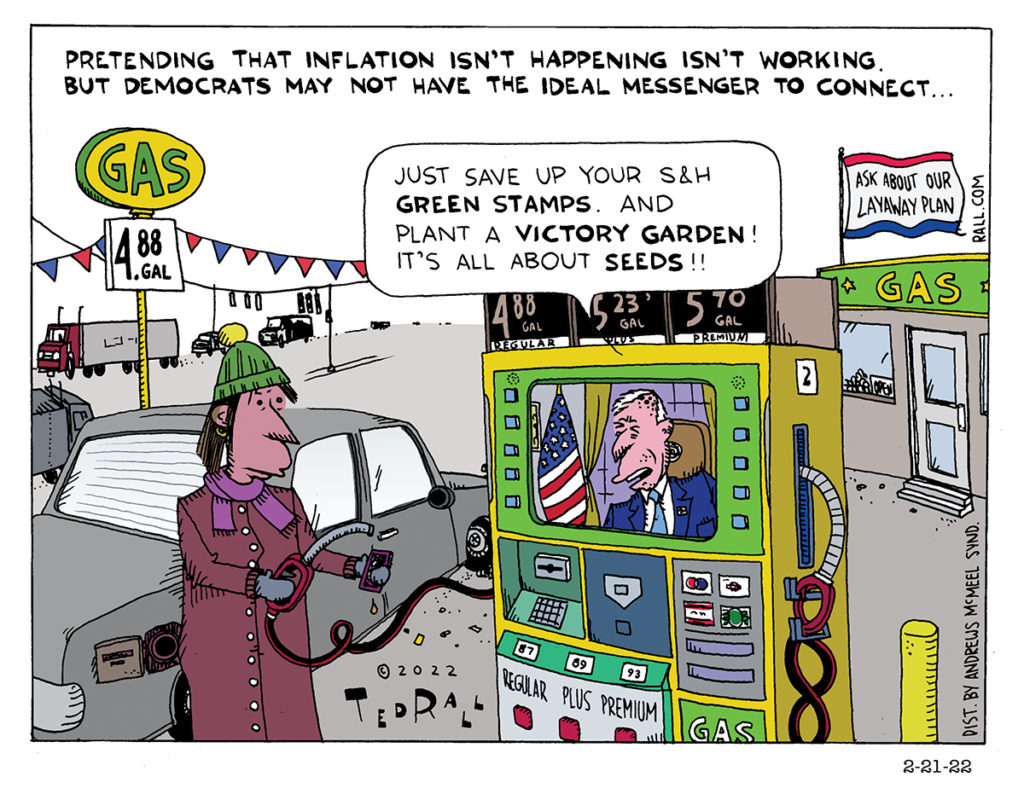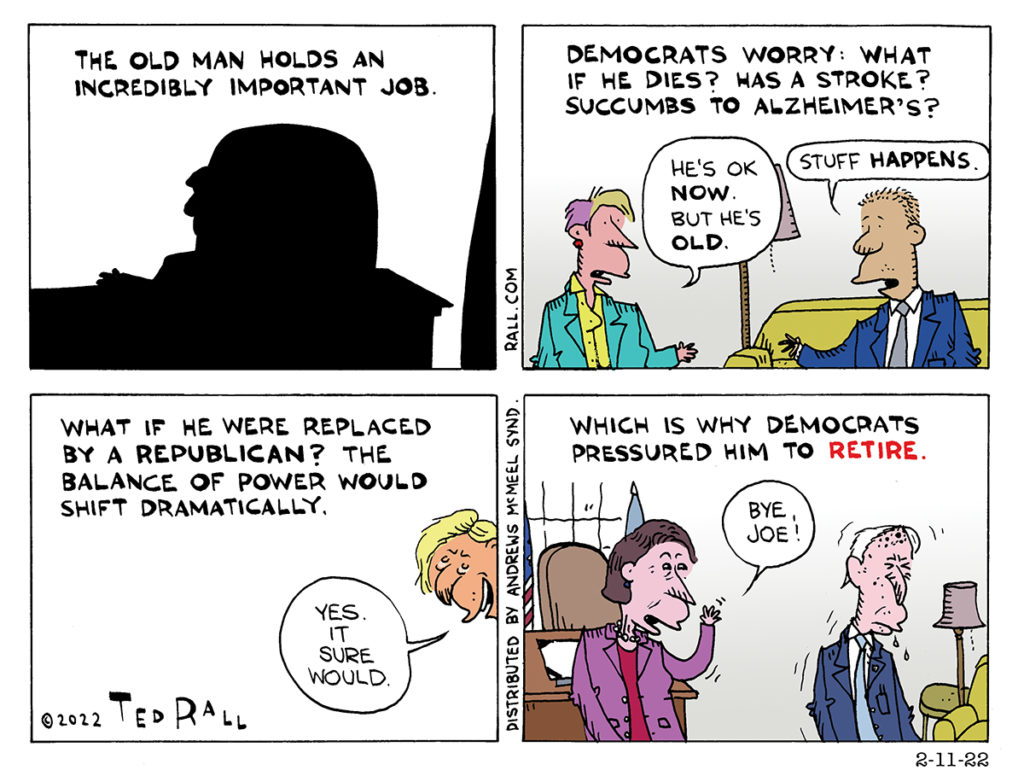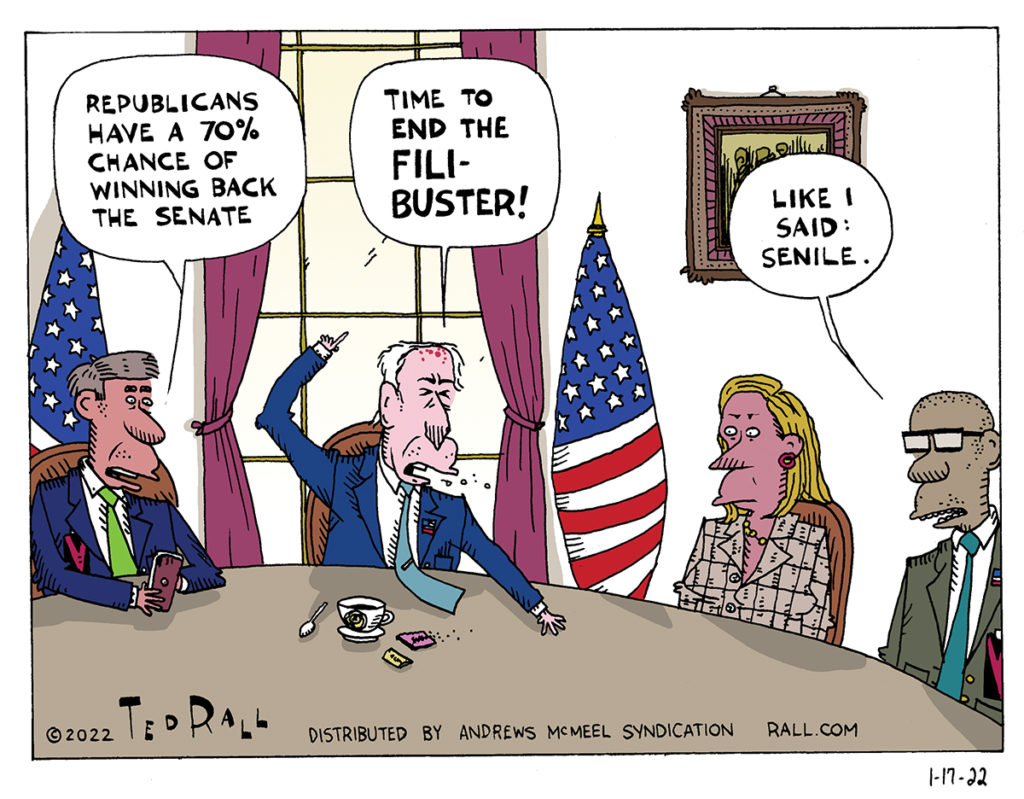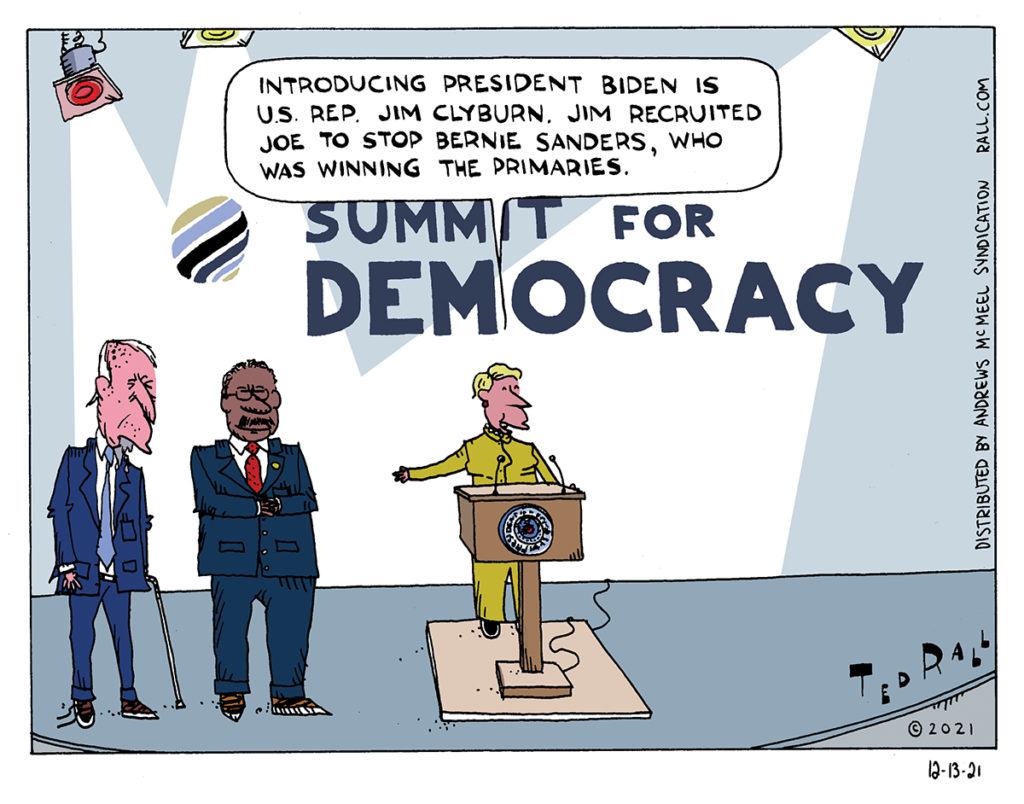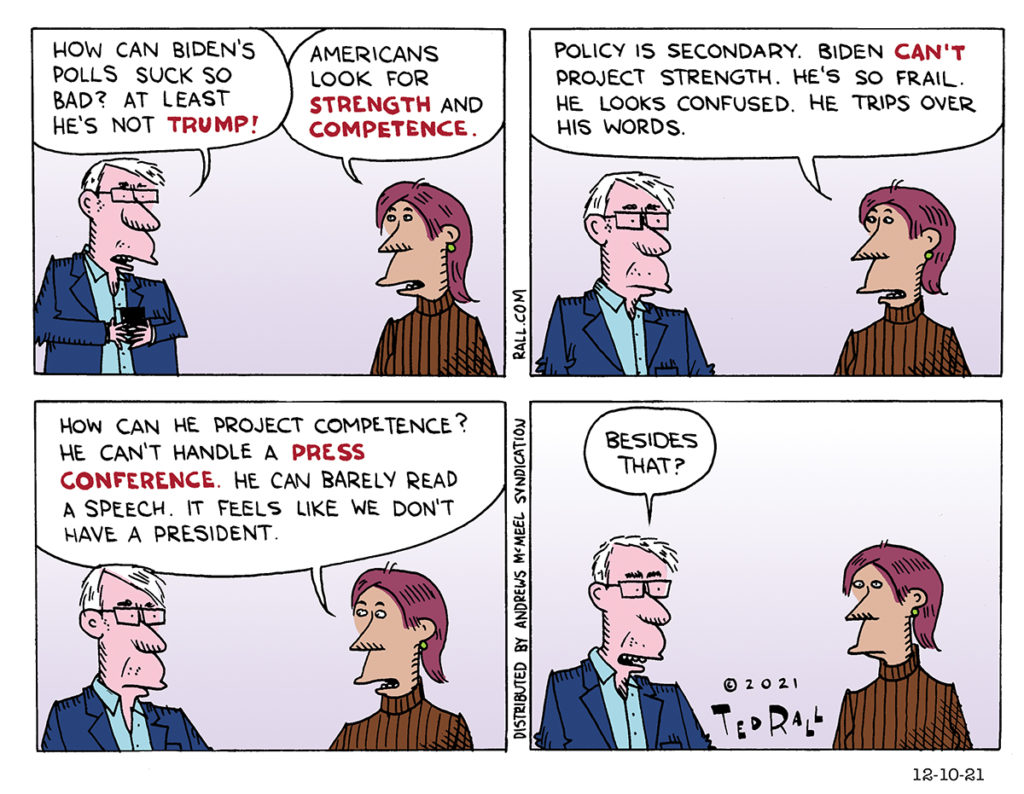The United States doesn’t have much moral high ground to criticize Russia’s incursion into Ukraine considering the fact that it constantly violates the sovereignty of other independent nations with drone attacks, airstrikes, CIA coups and outright invasions and occupations.
Somewhat Less Than Ideal Messenger
Democrats are facing tough polling numbers going into the 2022 midterm elections, in large part because of inflation. They should probably get someone to say something, maybe Joe Biden, but that doesn’t seem like a viable prospect.
Can We Make It President Breyer?
Supreme Court Justice Stephen Breyer was pressured to retire by Democrats who are worried that Republicans would re-capture the Senate and would get to choose his replacement in the event that he were to die at the age of 83. Meanwhile, there is no pressure whatsoever to replace President Joe Biden, even though his mental and physical state are clearly not as sharp as Breyer’s.
Who Do Those Maniacs Think They Are?
President Biden gleefully bragged about ordering the assassination of a high-ranking ISIS leader in Syria, which in case anybody forgot, is a sovereign state that is actually at war with ISIS. There is, apparently, little to no legal basis for what he did. But nobody seems to care.
Student Loans: A Silent Scandal No More
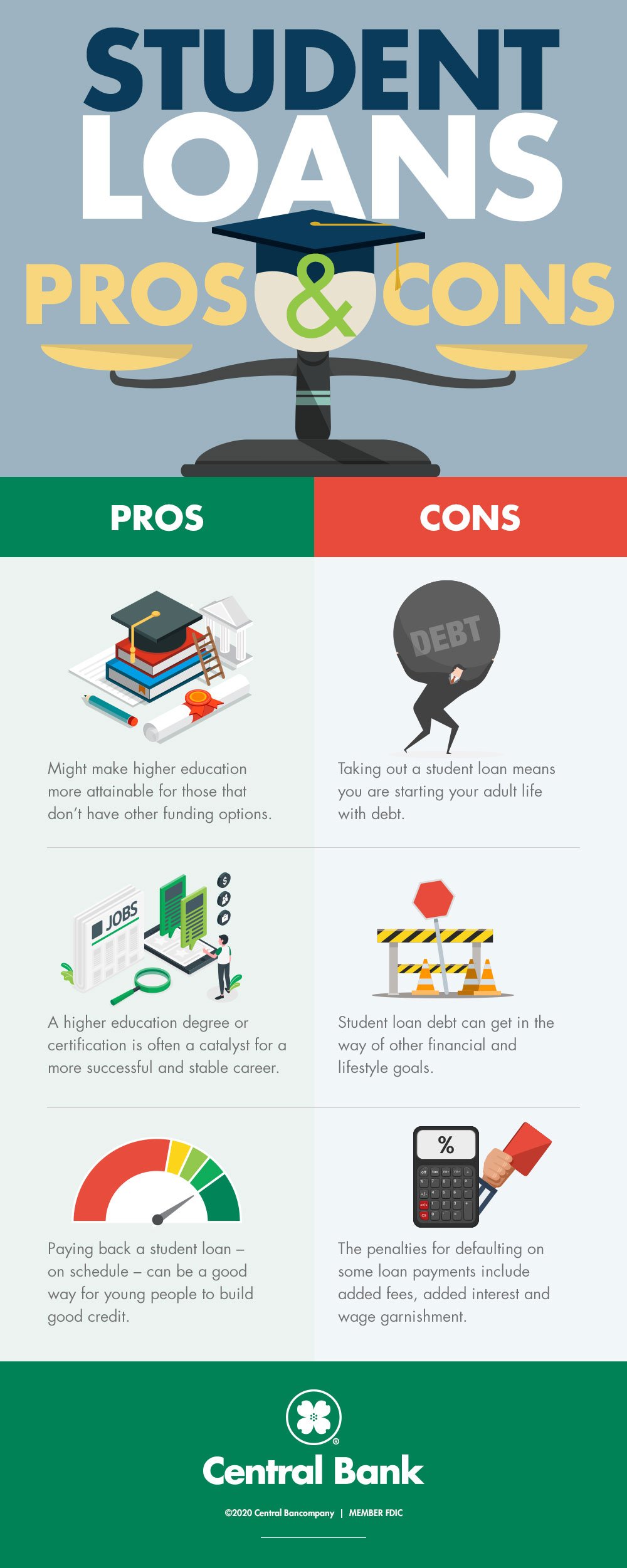
Student loans, long a non-issue that ruined countless lives, have finally become a political flashpoint in the conflict between progressive and moderate Democrats. Yielding to lefties’ pressure after Joe Manchin torpedoed Build Back Better, President Biden has extended Trump’s pandemic relief to 43 million federal borrowers by pausing payments another three months, to May 1.
The issue isn’t going away. 62% of Democratic and 57% of Republican voters aged 18 to 29 told a Harvard Institute of Politics poll that student loan debt is a major problem—a problem they think about when they pay their bills every month.
Left-leaning lawmakers want to go far beyond Biden’s stop-gap extension as well as his long-forgotten campaign promise to cancel $10,000 of debt per borrower. (The average ex-student owes $37,000 in federal loans.) Chuck Schumer, Elizabeth Warren and Ayanna Pressley propose to wipe out $50,000 each; Bernie Sanders and Alexandria Ocasio-Cortez want to forgive all $1.7 trillion.
A bill proposed by Republican Senator Marco Rubio would lower interest payments to zero, instead charging a one-time, non-compounding flat fee that student loan borrowers would pay over the term of their loan.
Our higher-education financing system is a scandal.
My grades and test scores were good enough to get into an Ivy League college. I was smart. But I was still a 17-year-old kid. In 1981 I didn’t know you were supposed to tip your barber, that your major field of study might have no bearing on your future career, or that Manhattan and Long Island were different places.
So signing a student loan agreement committing to repay thousands of dollars from a salary derived from some imaginary job in a mysterious future was a surreal experience.
I sat next to my mom in the lobby of the big bank building in downtown Dayton, clueless. All I knew was that I had to sign a sheaf of incomprehensible documents if I wanted to attend college. As my guidance counselor and teachers and parents had repeatedly warned, without a college degree I would be doomed to subsistence-level fast-food or manual labor—and factory jobs were getting hard to find.
Don’t forget to initial each page.
How much would I earn after graduation? What would be my monthly payment? How does compound interest work? Was 9% a reasonable rate? When would it begin to accrue? What if I became unemployed? I didn’t know and if the banker satisfactorily explained this stuff it didn’t stick to my hippocampus. I invisibly shrugged, hoping that I’d somehow muddle through.
I return to my state of mind 40 years ago whenever I hear someone deplore the ethics of the 15% of student loan borrowers who are in default at any given time. Is an obligation you don’t understand when you agree to it an obligation at all?
Honoring commitments is important. If you borrow money, you should pay it back. (I did.) But lenders have responsibilities too. As we saw during the subprime mortgage crisis of the late 2000s, the economy suffers when banks recklessly issue loans to borrowers who don’t understand the terms or won’t have enough income or collateral to repay—which is the case for most college loans.
Student loan lending is predicated on the assumption that graduates will be able to pay back what they owe, plus compound interest, out of the higher income they will earn compared to non-graduates. But 57% of student loan borrowers never graduate from college. Most borrowers, therefore, are naïve teenagers with bleak job prospects. Lending to them is as predatory as it gets.
Clemency proposals annoy people who already paid their loans, not to mention those who bypassed college rather than go into debt. Why should taxpayers foot the bill for others’ luxurious college education?
For one thing, post-secondary education is no longer optional. 65% of all job postings require a post-secondary education, according to a study by the Georgetown University Center on Education and the Workplace. As long as that’s the case, Americans will believe there’s a common economic interest in cranking out millions of freshly-minted graduates.
Canceling student loans across-the-board would have a low multiplier effect and thus do little to stimulate the economy. But there would still be advantages for everyone, not just borrowers.
Freeing a generation from debt slavery would provide flexibility and capital for new entrepreneurs and allow do-gooders to pursue work in helping professions with low wages. It would add liquidity to the nearly half of Millennials who report that their loan debts forced them to delay buying a first home by an average of seven years. You may not have gone to college yourself yet you may get to retire earlier because you’ll sell your home to a young couple at a higher price.
College expenses in the U.S. are too damn high, the most expensive system of higher education in the world after the U.K. on paper, but Britain’s are cheaper than ours when adjusted for grants and government-imposed price controls. When half of American borrowers continue to owe an average of $20,000 some 20 years after beginning as a freshman, reform is clearly called for.
One promising development is Secretary of Education Miguel Cardona’s promise to fix broken Bush-era student loan forgiveness programs for those who work in public service, education, healthcare and social work. Byzantine rules and application processes resulted in only 5,500 out of potentially 1 million qualified applicants getting their loans erased in part due to “miscommunication between the Department of Education and the loan servicers, as well as between the servicers and borrowers,” CNN reported about a 2018 General Accounting Office report. But that’s only a start.
Someday, hopefully, college will be free.
Until then, college loans need to be reined in. They’re a big business with no inherent limit upon growth. Colleges and universities have raised tuition and other fees faster than inflation because they know that a wide array of loan packages are available to students and parents. Lenders enjoy a fixed interest rate scheme that not only guarantees them a profit over their own borrowing rates, but also at low risk since it is virtually impossible to discharge student loans in bankruptcy.
These structural problems can be addressed by reducing lenders’ incentives to lend money willy-nilly and by reining in tuition costs. Congress should cap the maximum amount each student can borrow per year at $2500 for those attending community colleges and four-year public universities, and $5000 for those at private institutions. Bankruptcy courts should be given the option to discharge student loan debts. Any college or university that raises overall tuition, housing and other costs faster than inflation should not qualify for federally-subsidized loan payments from their students and ought to lose any federal contracts.
And if it’s really in the public interest for so many millions of young Americans to attend college and university, how does it make sense for educational financing to be a lucrative form of usury?
The federal government ought to take over the lending business from banks, with zero-profit interest fixed at the same rates it pays to holders of Treasury bonds. No one should get rich off the backs of 17-year-old kids seeking to better themselves through education.
(Ted Rall (Twitter: @tedrall), the political cartoonist, columnist and graphic novelist, is the author of a new graphic novel about a journalist gone bad, “The Stringer.” Order one today. You can support Ted’s hard-hitting political cartoons and columns and see his work first by sponsoring his work on Patreon.)
Maybe We Should Have Democratic Elections before We Start Lecturing About Democracy
The irony is always palpable when the United States lectures the world about democracy, as Joe Biden is currently doing with his Summit for Democracy. How does invading sovereign states, interfering with elections and propping up dictatorships play into that? Not to mention the fact that our own president isn’t truly democratically elected.
Besides That?
Democrats seem confused that Joe Biden’s approval ratings are dropping precipitously despite the fact that the economy isn’t terrible, he is acting on COVID-19 and he has passed a significant infrastructure bill. They don’t seem to understand that voters look first and foremost for strength and leadership in the commander-in-chief, and that Joe Biden is inherently incapable of projecting those two qualities.
Say You Ain’t Running Again, Joe
/cdn.vox-cdn.com/uploads/chorus_image/image/63536836/ap18336165758304_e1543945843897.0.jpg) Democrats need to stop playing cute about the president’s reelection plans.
Democrats need to stop playing cute about the president’s reelection plans.
Asked in March whether he’s going to run in 2024, Biden’s answer was, shall we say, less than unqualified: “The answer is yes, my plan is to run for re-election. That’s my expectation.” He added: “I’m a great respecter of fate. I’ve never been able to plan three-and-a-half years ahead for certain.”
Eight months and ten approval points later, White House press secretary Jen Psaki told reporters: “He is [running]. That’s his intention.”
Weasel words like “expectation” and “intention” signal that Biden is sticking to the “alternative strategy” that The Politico revealed in December 2019: “quietly indicating that he will almost certainly not run for a second term while declining to make a promise that he and his advisers fear could turn him into a lame duck and sap him of his political capital.”
According to aides, Biden expected to be a “transitional” figure due to his age. The Politico piece quoted an unidentified advisor: “He’s going into this thinking, ‘I want to find a running mate I can turn things over to after four years but if that’s not possible or doesn’t happen then I’ll run for reelection.’ But he’s not going to publicly make a one term pledge.”
With an approval rating of 28%, Kamala Harris is not that running mate. She is the least popular vice president in the history of polling. But running again is unrealistic for the oldest president in history. He would be 82 years old when he runs again and 86 when he completes his second term.
An 86-year-old president today would be the third-oldest head of state on earth.
And Biden isn’t the sharpest 79-year-old. He is visibly infirm, gets easily confused and can’t be trusted to hold a traditional press conference involving an unscripted back-and-forth with members of the press corps.
Whether he knows it or not, Joe Biden will almost certainly not run for reelection. Political insiders know it. (“One Democrat involved in campaigns said they couldn’t think of a single person they had spoken to in the last month who considers the possibility of Biden running again to be a real one,” The Washington Post reported recently.)
Voters know it too: 54% of Americans, including 45% of Democrats, told an August Quinnipiac poll they don’t believe Biden will be a candidate in 2024.
Democrats should deep-six this absurd game of “who are you going to believe, me or your lying eyes?” and admit the obvious truth. A man in Biden’s mental and physical condition at age 79 will not rally. He won’t get stronger by age 82, when he will be required to hopscotch the nation for a grueling series of campaign appearances and presidential debates, while simultaneously heading the federal government.
Credibility is the most valuable coin of the realm in politics. Anyone with a scintilla of common sense knows that Democrats are lying about Biden’s current fitness for office as well as his plans for reelection. There are lies and then there are lies that insult your intelligence; Trump’s ridiculous claim that Mexico would pay for his border wall stood apart from his other untruths.
It would be hard to overstate the brand damage caused by political messaging that doesn’t pass the smell test. “What [Biden] is saying publicly is what he firmly believes. There’s no difference,” former Pennsylvania governor Ed Rendell told The Washington Post. “He will not run if he feels he can’t do the job physically or emotionally.” Biden once had a word for this kind of playing-both-sides statement: malarkey.
“The message,” notes the Post, “is aimed in part at tamping down the assumption among many Democrats that Biden may not seek reelection given his age and waning popularity, while also effectively freezing the field for Vice President Harris and other potential presidential hopefuls.”
This strategy is misconceived. Harris is hobbled by her unpopularity. How can she intimidate potential primary challengers, much less clear the field? How can you freeze the field for Harris and someone else at the same time?
So the real question is about Biden. If he runs, the DNC will back him. Democratic candidates and donors are understandably reluctant to committing time and money toward 2024—something they need to begin now—if there’s a strong possibility that Biden will run. More candidates, running longer campaigns, improve the likelihood that the eventual nominee will emerge well-funded, seasoned and tough enough to face Donald Trump or another Republican.
There are, of course, costs and risks associated with exposing a sitting president as a lame duck. First and foremost would be Biden’s ability to push through major legislative initiatives. Which is why he should delay his admission that he plans to be a one-termer until after the passage of whatever is left of his Build Back Better social-spending bill next year. BBB is the last major law Biden will ever have the chance to sign; he’ll be a de facto lame duck anyway.
Congressional Democrats won’t like going into the midterm elections without a strong president, but they’re going to get shellacked no matter what. They can recover their losses in 2024 on the coattails of a presidential nominee made stronger by a vigorous primary battle and Biden’s willingness to step aside.
In any case, voters might give Democrats credit for being honest about the physical and mental health of the president, for being mature enough to prepare for who will follow Biden and for treating them like adults.
(Ted Rall (Twitter: @tedrall), the political cartoonist, columnist and graphic novelist, is the author of a new graphic novel about a journalist gone bad, “The Stringer.” Order one today. You can support Ted’s hard-hitting political cartoons and columns and see his work first by sponsoring his work on Patreon.)

